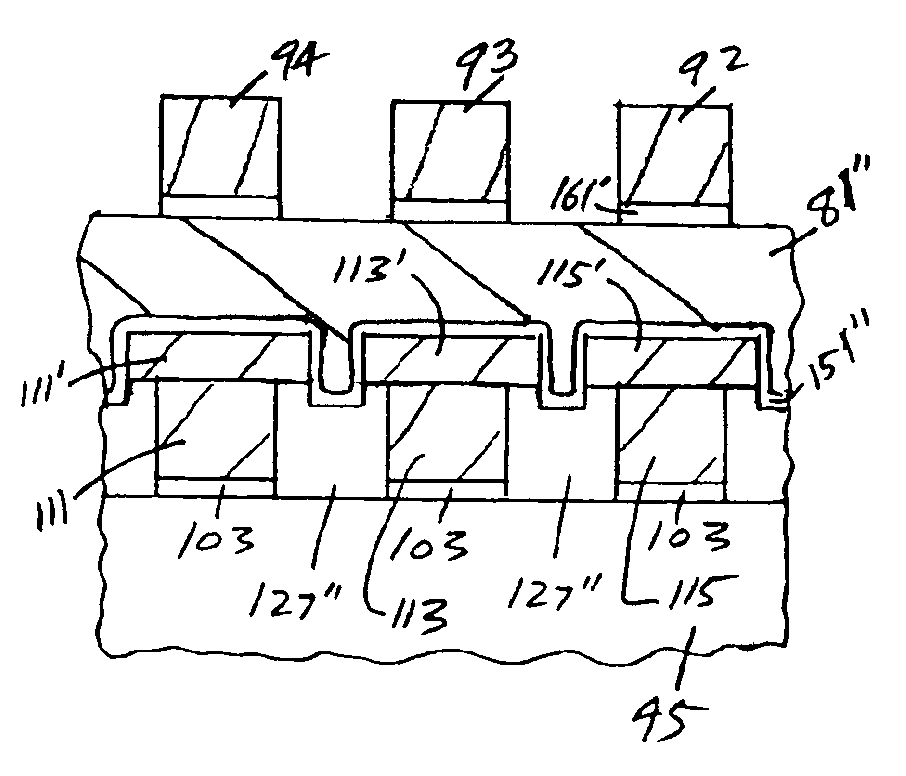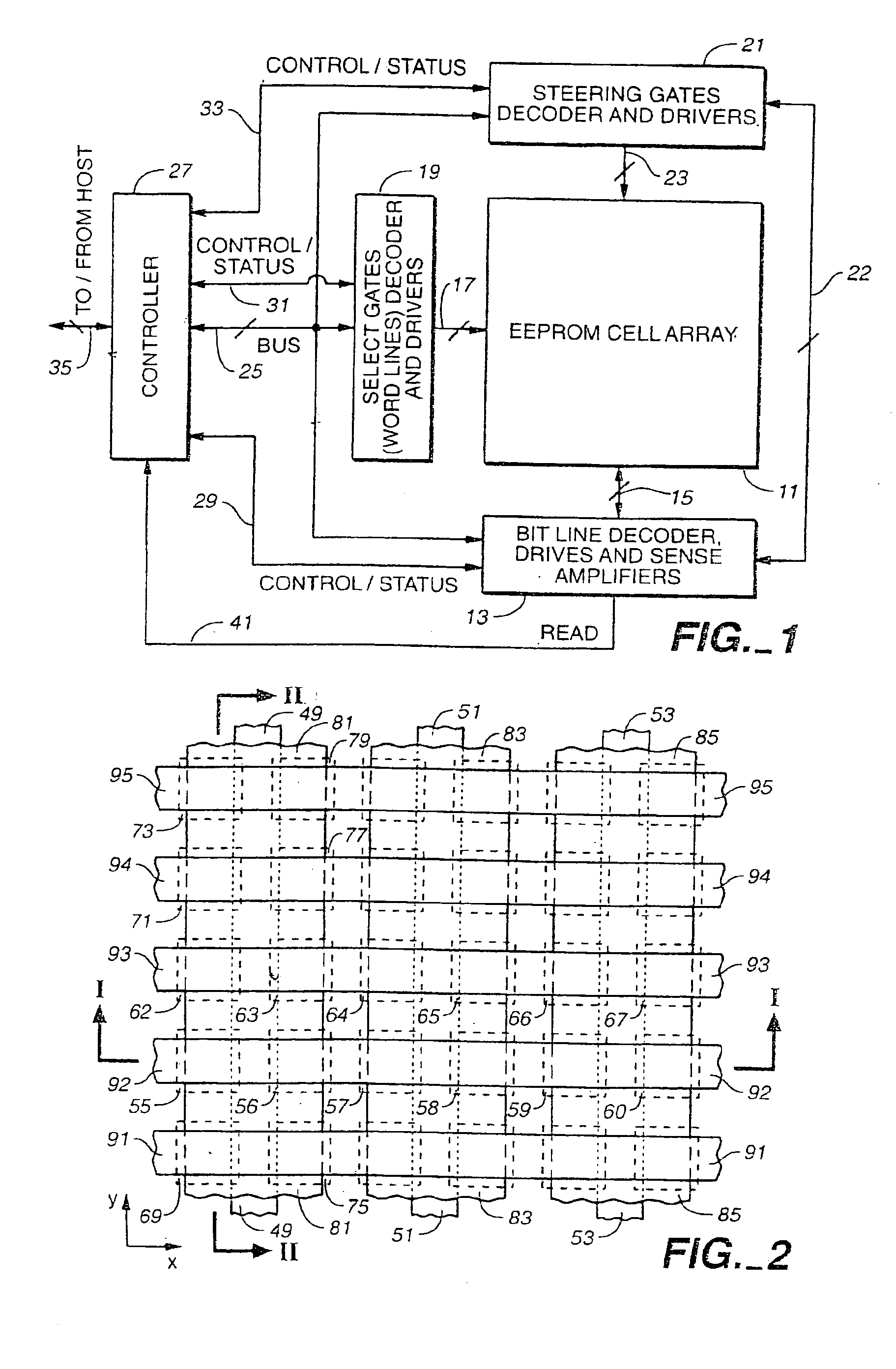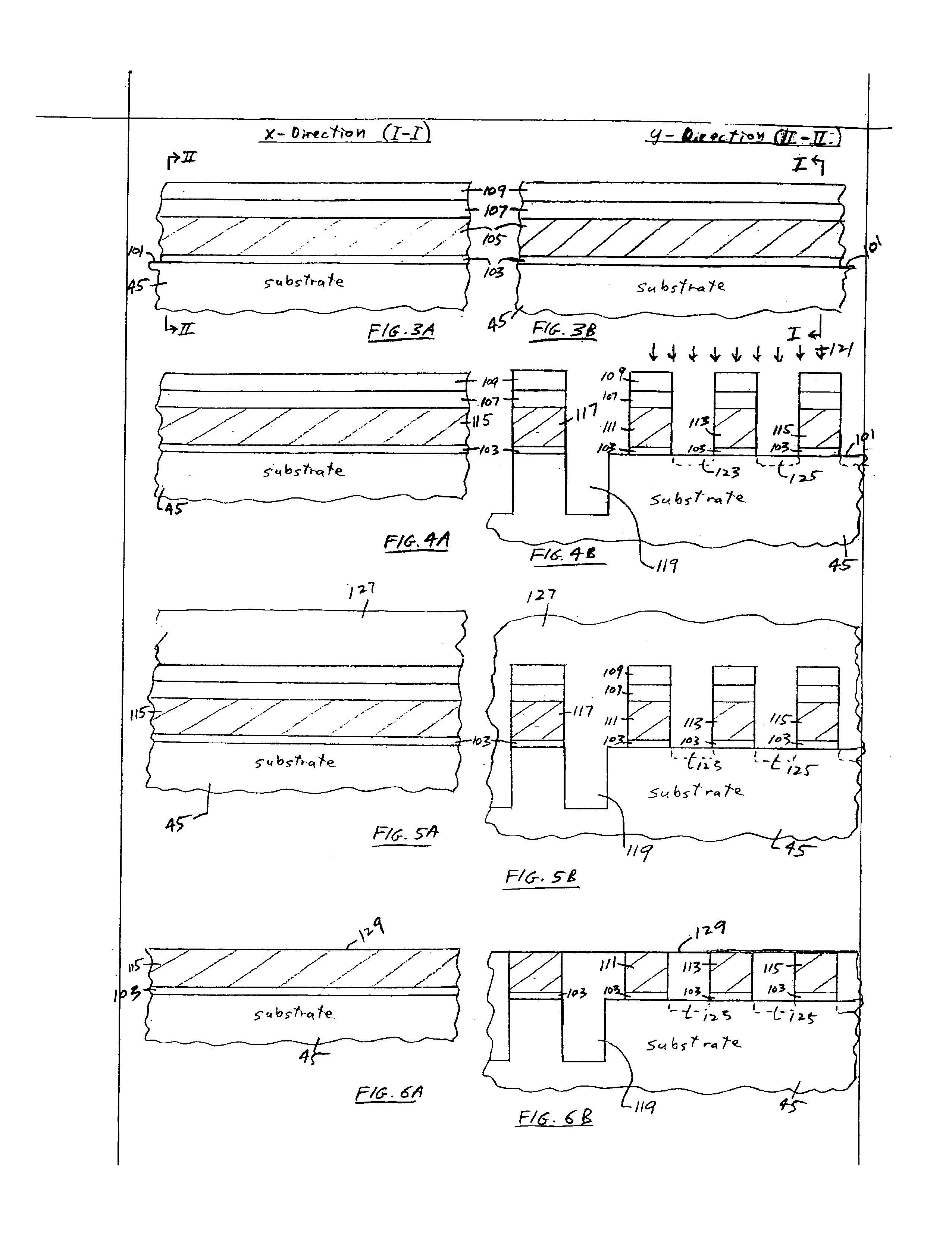Scalable self-aligned dual floating gate memory cell array and methods of forming the array
a memory cell array and floating gate technology, applied in the direction of semiconductor devices, electrical devices, transistors, etc., can solve the problems of limiting the amount of shrinkage of the overall layout, the difficulty of performing both of these functions, and the limit of the circuit layout. , to achieve the effect of improving the memory erasure operation, reducing the complexity of the conductive bit line, and high quality
- Summary
- Abstract
- Description
- Claims
- Application Information
AI Technical Summary
Benefits of technology
Problems solved by technology
Method used
Image
Examples
first processing example
[0052]FIGS. 3-9 illustrate a sequence of steps utilized according to one aspect of the present invention to form the array of FIG. 2, by showing sectional views of FIG. 2 across sections I—I (part A of each figure) and section II—II (part B of each figure). Referring initially to FIGS. 3A and 3B, the result of several initial steps in the semiconductor processing are illustrated. A thin (such as 80-100 Angstroms thick) layer 103 of oxide dielectric is grown over the entire surface 101 of the silicon substrate 45. Next, a thick (such as 500-3000 Angstroms) layer 105 of polysilicon is deposited over the dielectric layer 103. The thickness of the layer 105 is made to be sufficient to provide an amount of coupling along its sidewalls with later formed steering gates that is desired. This polysilicon may be deposited in a doped form or deposited undoped and then doped in a later step by ion implantation. A dielectric layer is then formed over the polysilicon, shown to be two layers. A la...
second processing example
[0070]FIGS. 16-22 show exemplary sequential cross-sectional views of an integrated circuit structure that illustrate many steps of its formation by a process that corresponds to, but differs in certain respects from, the process described above with respect to FIGS. 3-9. The process illustrated in FIGS. 16-22 includes use of narrow source and drain implants (formed differently in FIG. 10), thickened dielectric layers between the substrate and the select gates (described with respect to FIG. 11), “T” shaped floating gates (as shown generally by FIG. 13B) and a double dielectric layer between the select gates and the word lines for a reduced coupling between them. The reference numbers used in FIGS. 16-22 for corresponding elements in FIGS. 3-9 are those of FIGS. 3-9 with 200 added. For example, the semiconductor substrate in FIGS. 16-22 is labeled “245” while the substrate in FIGS. 3-9 is labeled “45”.
[0071]FIGS. 16-19 illustrate some of the preliminary processing steps of this secon...
third processing example
[0088]Yet another method of forming the same type of array as described above is illustrated in FIGS. 23-26, wherein the “A” portion of each figure is a section of a small portion of the memory cell array being formed, taken at section I—I of FIG. 2 (along the x-axis), and the “B” portion of each figure is a section taken at section II—II of FIG. 2 (along the y-axis). The primary difference between this embodiment and those of the examples described above is that the separation of the first polysilicon strips in the x-direction into individual floating gates occurs during a single masking step, rather than using the nitride reference elements (131, 133, 135 etc. of FIGS. 7 and 8, and 331, 333, 335 of FIGS. 20 and 21) to form masks that are aligned during first and second etching steps. After this single etch has occurred, intermediate polysilicon is formed in each of the spaces between floating gates in the x-direction, this intermediate polysilicon becoming part of the steering gat...
PUM
 Login to View More
Login to View More Abstract
Description
Claims
Application Information
 Login to View More
Login to View More - R&D
- Intellectual Property
- Life Sciences
- Materials
- Tech Scout
- Unparalleled Data Quality
- Higher Quality Content
- 60% Fewer Hallucinations
Browse by: Latest US Patents, China's latest patents, Technical Efficacy Thesaurus, Application Domain, Technology Topic, Popular Technical Reports.
© 2025 PatSnap. All rights reserved.Legal|Privacy policy|Modern Slavery Act Transparency Statement|Sitemap|About US| Contact US: help@patsnap.com



